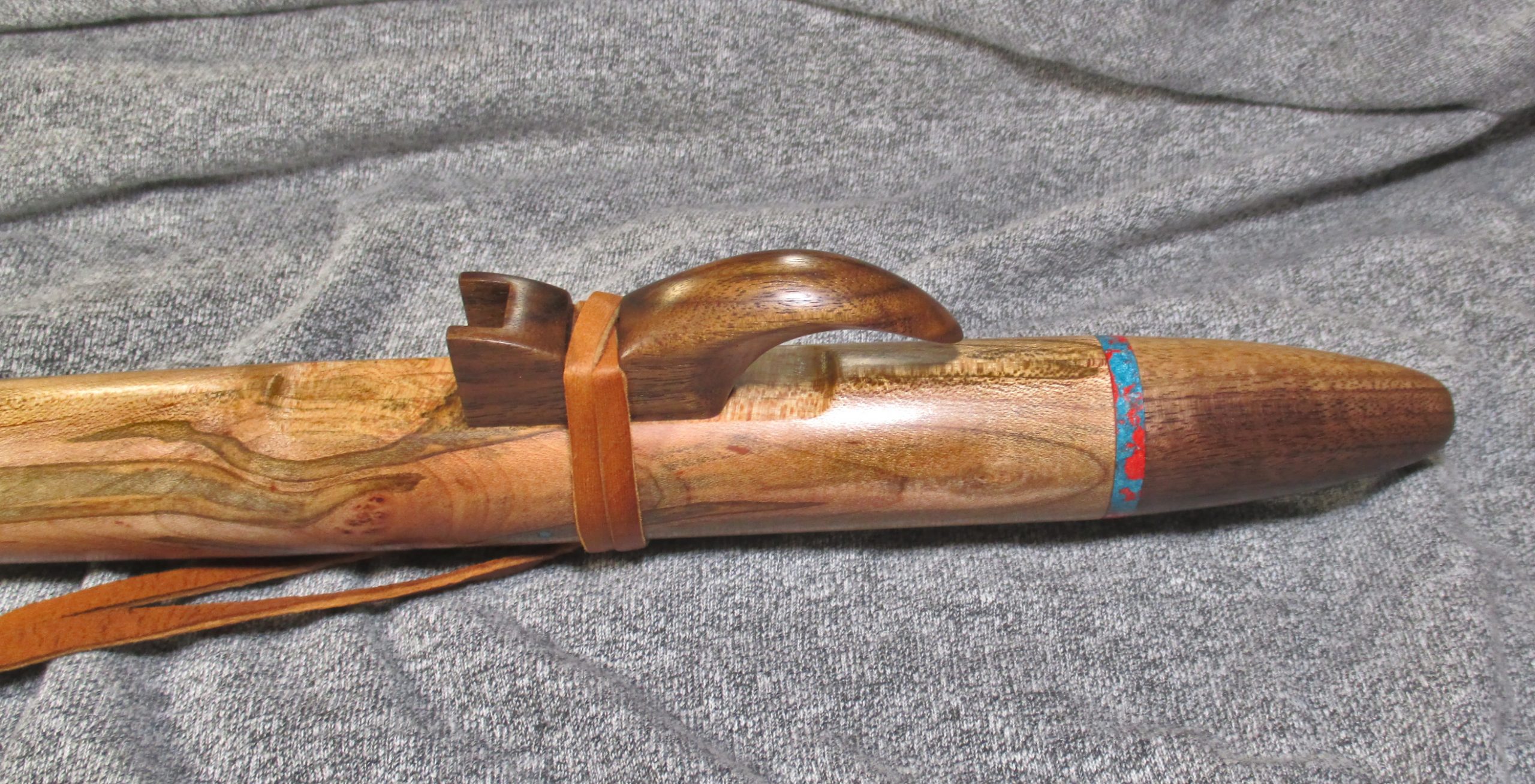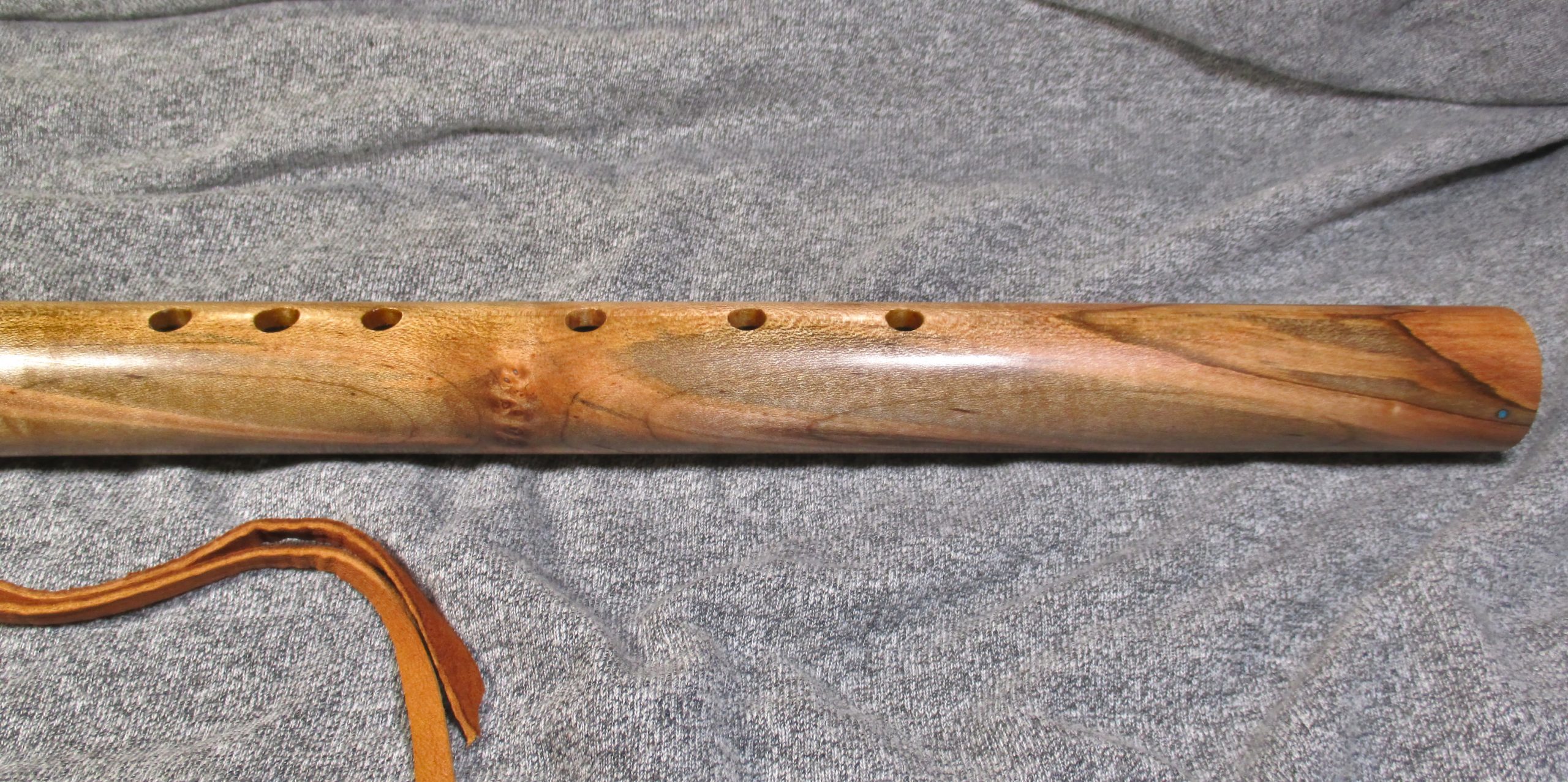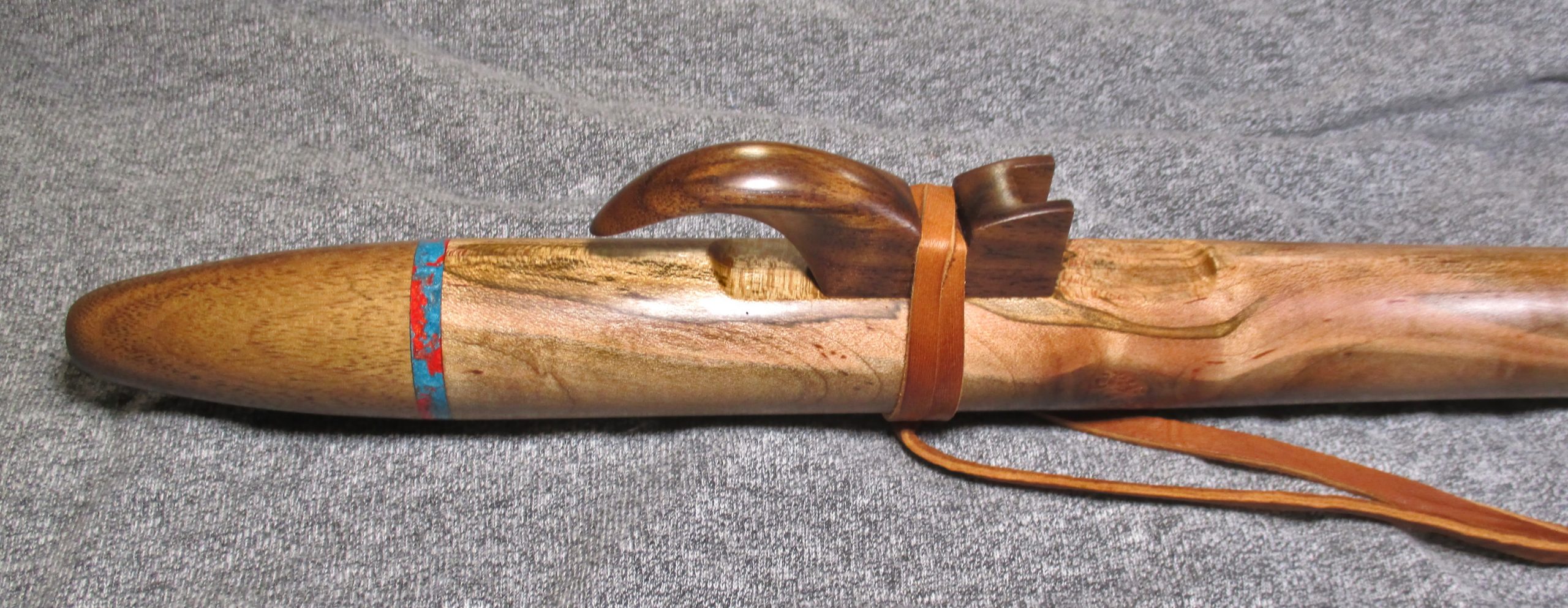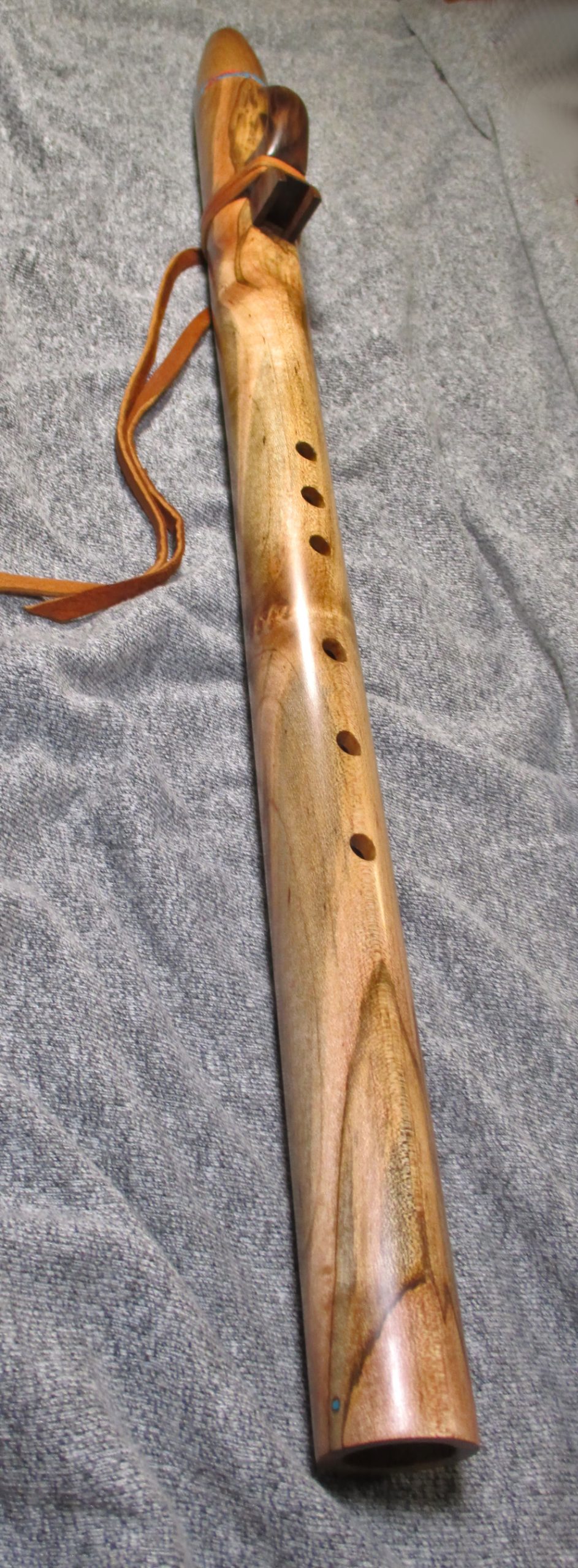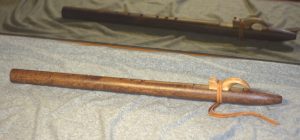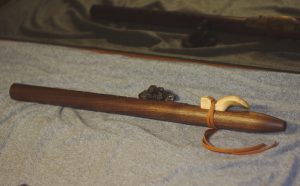Native American-style flute in F#
(F# octave 4 fundamental with F#5 higher “octave note” up top, also).
Primary scale of pentatonic minor (standard) + more (see Tuning below)
Premium sound, performance & look, all in one.
7/8″ bore diameter and a 7/16″ wide sound hole give it volume and harder playing ability before overblow, but can be played in a soft and supple manner, as well, giving it range.
Warble: This flute has a controlled warble (inherent undulation) at the fundamental (lowest note) under most or all playing conditions (I have not tried it in very cold weather) — but only when you want it to. After the bore sealer fully cured, it settled into being just as strong of a warbler as my advertised warblers.
Inlay: The turquoise & red coral colored accent ring is a thick, dyed, crushed mica inlay (acrylic-stabilized) embedded about 1/8 of an inch+ deep (over 3 mm deep). While I use natural stones sometimes, I also love mixing these two colors (as done here!) made possible with highly pigmented mica crystals. The mica is lab-produced for ecologically-minded soap companies and not mined with child labor as was a natural mica concern in the past.
Finish:
This flute is well-sealed and protected but not overly shiny. It is not unfinished wood that’s only oiled with simple flute wax (I can make those); this is more maintenance-free than that. It has had 2 outer and 3 inner sealing coats that sunk in — thin “drying oils” that were given time to harden in the wood (not on the wood) then topped with Odie’s Oil which makes a great flute wax (you can wax the flute, too, but don’t have to).
Ambrosia!
The tiny Ambrosia Beetle infests the hard maple and, before leaving after metamorphosis, transforms the grain with stunning colors. I plugged the beetles’ holes with colored inlay.
You can play my flutes harder than many. Very controlled overblow.
You Will Not Be Disappointed
Shipping:
We share the shipping cost with you — April 2022 or so USPS raised prices on this length. Your minimal, $10 flat rate shipping fee is about half what it costs us, total, to buy and get the heavy-duty fiber-board shipping tube to you (which actually makes a viable storage/travel container, even kept and decorated by some customers). The tubes, alone, normally cost $6 each, purchased separately.
I will not be able to continue selling flutes of this quality for this price — this is to get our name more out there.
Tuning
Aside from pentatonic minor with hole 4 closed (and hole 4 open with hole 3 close, for extended scale) a good number of intuitive cross-fingerings are available and are actively “Grealish-method” tuned in the final tuning process (after tuning the first hole, each hole is tuned to both a primary and a cross-fingered note as best as possible, finishing by enlarging or undercutting only one side of the hole). This makes even more notes fall into place automatically, typically including a couple in the second register.
There are a couple ways of playing a full chromatic scale on this flute, with only one note either just a little sharp, or by half-fingering a hole (your preference). Any song may be played this way.
Getting into splitting hairs (TMI?)
This F# flute is tuned to the community standard reference of A=440. All flutes change in pitch with temperature, Native American style flutes cannot be re-tuned on the fly, so NAF’s are played solo, with others, or any strings instruments tune to it. This particular flute was not 100% warmed up to body temperature before tuning which means as it warms up it is actually more like A=440 at 76-78F instead of 72F. While you’ll never hear this insignificant difference, it does mean it’s technically, infinitesimally more in tune at the more common temperatures for some people (esp. in the South). It’s insignificant anyway — you’ll typically never see minutia like this mentioned; I take tuning seriously so I “went there” in the description. Ultimately, a good NAF is most in tune when the player is used to playing and using breath control, and always in good tune with itself at any temperature.


